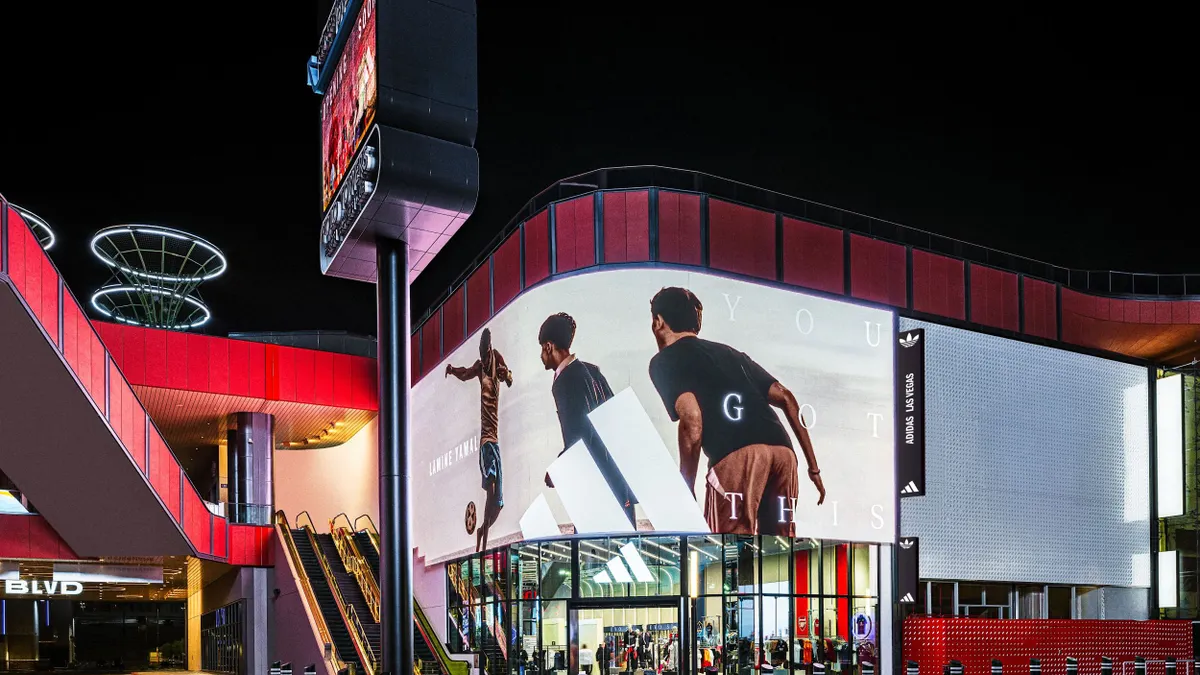Dive Brief:
- Lululemon is overhauling its product design and development processes and accelerating its go-to-market timeframe as it faces persistent challenges in the U.S. The retailer expects to see product and performance improvements beginning in 2026, CEO Calvin McDonald said on a call with analysts Thursday.
- Lululemon’s North America business all but ground to a halt in the second quarter, with revenue up just 1% and comps decreasing 4%. International more than made up for the difference, with net revenue surging 22% and comps up 15%.
- As a result, Lululemon slashed its guidance for the year, now expecting revenue growth of 2% to 4%, compared to previous expectations for 5% to 7%. Earnings per share guidance also took a hit.
Dive Insight:
Lululemon has spent the past few quarters seeking a reprieve from slow consumer demand and worsening trends in the U.S., but the second quarter only delivered more of the same.
Overall, the business is still growing, with Lululemon’s revenue up 7% in Q2, reaching $2.5 billion, and comps up 1%, but that is all thanks to its international business. In the U.S., McDonald said the brand was “not happy” with its results and has conducted a product analysis to discern deeper problems.
“We have become too predictable within our casual offerings and missed opportunities to create new trends,” McDonald said. “At the same time, we are seeing shifts within the industry.”
Specifically, the executive said shoppers were spending less on apparel and less on performance activewear. According to GlobalData Managing Director Neil Saunders, though, Lululemon is performing worse than the broader athleisure market, which is up 3.4%. That suggests that it’s losing share — and indeed, Lululemon referenced increased competition as one challenge it’s facing.
“Our data suggest that even relatively loyal Lululemon shoppers are broadening their repertoire, increasingly willing to try alternative brands,” Saunders said. “The blunt truth is that Lululemon is no longer the challenger; it is now the brand that other, younger labels look to hunt and take share from.”
Indeed, an Earnest Analytics report from last year found companies like Alo Yoga and Vuori picking up share in the market, with both of those brands seeing notable customer overlap with Lululemon and Nike.
Although competition is a part of the problem, McDonald laid much of the blame at Lululemon’s own feet, saying the brand’s lounge and social offerings “have become stale” and that the retailer relied for too long on one playbook. Customers in the quarter also rejected new seasonal colors, and even as they responded well to some new styles, Lululemon wasn’t able to chase demand fast enough to capitalize on those efforts.
As a result, the brand is focused on increasing new styles, rebalancing its merchandise mix and speeding up its design process. Global Creative Director Jonathan Cheung, who joined last year, has built out a team of fresh design talent to infuse new life into Lululemon’s assortment. The brand plans to grow new styles to 35% of its overall assortment by next spring, up from 23% now.
“After taking stock, management now believes lounge and social (a combined 40% of the mix) are the key culprits, with product cycles that have run too long yielding fatigue among consumers (particularly high-value, long-term lululemon customers),” William Blair analysts led by Sharon Zackfia said in emailed comments. “These categories also happen to be key areas of strength for emergent competitors, which will likely feed the flames of investor concerns about competitive infringement.”
At the same time, Lululemon is battling tariff headwinds, which have worsened since the end of the de minimis exemption. The retailer is planning for a $240 million tariff hit in 2025, or 220 basis points. That compares to a previous expectation for 40 basis points.
“Looking ahead, holiday gifting may provide a short-term lift,” Emarketer Vice President Suzy Davidkhanian said in an emailed note, “but sustainable growth hinges on whether Lululemon can move credibly into new sport verticals and find the right formula for its footwear.”















